UGC Clariont Flag. | Riviera-Class Resort Ship. | 
UGC Clariont Flag. |
|---|
The Riviera-Class Resort Ship are one of the most advanced civilian vessels ever designed in the UGC for colony missions (outside of the New Macross-Class city vessels). The colony ship is shaped like a giant spiral seashell and contains an  | | Riviera-Class Resort Vessel Riviera, Namesake Of Her Class. |
|---|
 |  | | Riviera A Few Years Later (after a paint job). | Topside View Of The Riviera-Class From Original Investment Proposals. |
|---|
 | | Riviera-Class Vessel Camarra, Named For A River On Garuda. |
|---|
artificial ocean surrounded by over 100² miles of simulated beachfront property. The ocean provides the citizens of the colony fleet with a wide variety of water sports, including swimming, yachting, surfing, jet skiing, and trolling. Artificially generated waves of varying strengths produce areas of shoreline that are calm or choppy to suit the tastes of the vacationer, while the life support systems keep the temperature of the vessel at a pleasant summer temperature with a refreshing breeze rolling in off the water (does not smell recycled due to advanced proprietary air conditioning systems). The hotels and restaurants along the shoreline are regarded as the most luxurious in known space and are extremely popular among the colonists.The Riviera-Class vessels also provide additional services for the colony fleet other than entertainment. Kelp and seaweed are grown and farmed along the bottom of the ocean, while many different kinds of fish are bred and raised to provide the colony with additional food supplies. While not capable of producing foodstuffs on the same magnitude as proper agriculture vessels, the Riviera-Class farms produce seafoods and other delicacies that are highly sought after by the colonists. The crew of a Riviera-Class also engages in ocean research, constantly working to discover new ways to use the sea to produce more for the colonists. In the event that a colony fleet encountered a habitable water world, the Riviera-Class would work closely with Einstein-Class Research Vsls to determine if the world is suitable for supporting a long-term colonization effort.Because of the strict environmental requirements of the simulated ocean and the sea life contained within it, Riviera-Class vessels have extremely advanced and fault-tolerant life support systems. The vessels are highly compartmentalized, and in the event of a hull breach or other damage large sections of the ship can be completely sealed off to prevent loss of environmental control in the intact areas. Riviera vessels are linked to ARK ROYAL-Class Escort Battle Carriers in much the same way that the New Macross-Class Battle sections and City sections combine to form one larger ship. The Riviera-Class vessels are controlled from the bridge of the docked carrier, and the carrier's VF squadrons provide protection for the colony vessel in case of attack. The carrier can disconnect from the Riviera if necessary, and the vessel is equipped with an emergency bridge to control the ship when the carrier is detatched. The staff and crew of the Riviera-Class vessels are well trained in crowd control and can quickly evacuate guests to shelters or escape pods in the event of a serious emergency.Riviera-Class vsls were developed around the same time as the New Macross-Class colony vessels were released, and since 2030 at least one Riviera-Class vsl has accompanied every UGC (and predesessor colony mission. The vsl's entertainment and farming facilities have helped greatly in maintaining colony morale. Only one Riviera-Class ship have been lost so far; the Riviera 05 was captured by the Varuta shortly after landing on the planet Rax and was later destroyed after the captured civilians had been transferred in the Protodeviln's spiritia farms. The Riviera 07 was also captured by the Protodeviln but was rescued during an all-out counterstrike by the Macross 07 military forces. The ship was later repaired and returned to service.SurvivabilityThe is a deeply mistaken impression that the Riviera-Class, being "resorts" (and therefore ostensibly a relaxed atmosphere) are 'easy pickings' to raiders and malcontents; In fact, the exact opposite is true. While the ship's massive dome is particularly vulnerable (or seemingly so) to attack, the ship is actually a collection of about 100 "ships within ships," and even 10,000 "Ships within ships within ships"; The individual buildings of the Riviera-Class can each be individually sealed as essentially a life pod, and in fact individual compartments within the buildings can be re-sealed in case the overall building is compromised. The shields need hold out only a few minutes; it takes only 12 minutes to evacuate the "grounds" for all but the most assistance-dependant, then to seal the buildings takes only seconds. With the building sealed, individual compartments can be sealed to hold out up to 25 hours if undamaged. Every crewmember, wait staff, and passenger is supposed to carry Type-A spacesuits with them at all times, meaning they should be able to hold out for weeks if all goes well (as is usually the case).
Government: United Galaxies Council.
Primary Users: Private, for-profit pleasure cruise corporations.
Ship Type: Long Distance Colonization Marine Resort/Research Vessel
Class: Riviera-Class
Crew (not including Escort Carrier): 74,300 total (plus tourists).Military Crew: 1,000.Civilian Crew: 3,000.Police/Civil Defense: 300.Permanent Civilian Populace: 70,000.Visitors/Tourists: up to 80,000 max.
MDC BY LOCATION: |
* Hull
Projectile Shield (Closed)
Projectile Shield (Per 40 ft area)
** Ocean Dome
** Ocean Dome (Per 40 ft area)
Small Airlocks/Access Hatches (300)
Main Airlock 1,000
Outer Hull (per 40ft area) | 150,000
100,000
500
30,000
200
250 each
120
200 | Interior walls (per 20ft)
External Engineering/Sensor Spokes (9)
Lower Sensor Spoke
Connection Joint/Engineering Section
*** Main Engines/Power Plant (2)
*** Auxiliary Engines (4)
**** Pin Point Barriers (4) | 40
1,500 each
1,000
25,000
50,000 each
7,000 each
5,000 each |
| NOTES:* Depleting the MDC of the main body will essentially destroy the vessel. All internal systems will shut down, including life support and internal gravity. The colony ship itself will be an unsalvageable floating wreck, and any surviving colonists (and marine life) must be rescued quickly or will die from asphyxiation as the remaining atmosphere drains into space.** In "Shell Up" mode, the semi-transparent ocean dome is completely covered by the projectile shield. Therefore in order to attack the dome in this mode the projectile shield must be penetrated or destroyed first. If the ocean dome is destroyed while in space (1D6 times 10) percent of the colonists inside will be instantly killed due to explosive decompression.*** Depleting the MDC of the main engines will force the ship to rely on its auxiliary engines. Depleting the MDC of the main engines AND auxiliary engines will leave the colony ship adrift in space. If in an atmosphere, the colony will crash (destruction of the main engines will render the antigravity system useless due to loss of power).**** The Pinpoint Barriers regenerate at a rate of 1,250 MD per second (2,500 MD per melee round). If destroyed, a barrier will completely regenerate within four seconds (2 melee rounds). See the Pinpoint Barrier System entry for details.Speed and Statistical Data: |
Speed (sublight): 0.16 speed of light (25,600 miles per second).
Speed (Auxiliary Drives): Mach 3
Space Fold: Range Unlimited (1 light year every 6 minutes).
Planet Bound: Designed to land in a planetary ocean when necessary but not designed to maneuver in an atmosphere. The Riviera is NOT designed to land on the ground. If it does so the landing will inflict 3D6 times 1,000 MD damage to the main body of the spacecraft (the lower sensor spoke will be automatically destroyed) unless the site is prepared in advance.
Maximum Range: Unlimited (estimated 30 year life span).
Length (main body): 10,890 ft (3,300 m).
Length (connector/engineering section): 1,650 ft (500 m).
Length (external spokes): 4,125 ft (1,250 m).
Length (overall): 14,355 ft (4,350 m).
Weight: Approximately 10,700,000,000 tons standard.
Power System: ORTEC/General Galaxy Main Reactor. | Fold System: ORTEC/Shinnakasu/General Galaxy Advanced Fold System Cluster.
Sublight Drive: ORTEC/Centinel Impulse Drive Cluster.
Gravity Control System: Internal.
Auxiliary Engine: Shinnakasu/Shinsei Industries/Agar Nuclear Pulse Rocket Motor Cluster.
Cost and Availability: As a shell, these ships go for 20 BILLIONcredits; Outfitted the price is tripled. Even "used" the ships sell for 40-50 billioncredits (with another 5-10billioncredits "yard period" to come). But they're worth every penny- A single one-month cruise can return as much as 50 millioncredits, returning a full investment in as little as 34 years. With a hull length of 100-150 YEARS without SLEP (which will extend the hull life up to three times on the first SLEP alone). Takes about 06 months to build and another 4-8 months to outfit (mostly installing slot machines).
|
| Weapons Systems: |
|---|
1. Pinpoint Barrier Defense System: Originally developed by researchers onboard the SDF-01 MACROSS during the First Robotech War, the Pinpoint Barrier System is a standard defense system on board all UGC starships and colony vessels, including the Riviera-Class colony ships. The system generates four small disc-shaped force fields that can be positioned anywhere along the ship to deflect missiles, energy beams or projectiles. Each pinpoint barrier is about 200 ft (61 m) in length and can absorb up to 5,000 MD in damage, which then regenerates within four seconds (2 melee rounds). The barriers can also be layered on top of each other to generate a field which provides 20,000 MDC and can even deflect heavy particle beams (usually). The four barriers are controlled by operators in the command tower of the carrier. These operators are instructed to defend (1) any breaks or weaknesses in the projectile shield ᵃⁿᵈ/ₒᵣ ocean dome, (2) the engineering section/battle carrier docking section, and (3) the main and auxiliary engines, in that order. The operators primarily concentrate on defending the ship against larger spacecraft and leave defense against attacking mecha to the VF pilots from the battle carrier.
Damage Capacity: Can sustain up to 5,000 MD per round. Regenerates at a rate of 2,500 MD per melee round.
Range: Up to 300 feet (91.5 m) from the surface of the vessel.
Radius: 200 feet (61 m).
Attacks Per Melee: Can move from one end of the vessel to the other in less than a single round. Trained operators can attempt to block attacks up to 8 times per melee (counts as a parry) and are at +7 to block. Untrained characters can parry up to their number of hand-to-hand attacks with their normal parry bonuses only.
Payload: Nearly inexhaustible. Will work as long as system is functional (see below) and engines are intact. If main engines are destroyed, the barrier will loose power and not function. Note: If all four barriers are grouped in a single spot they can deflect a heavy particle beam attack, such as the one generated by the Macross Cannon, T'sentraedi, and some others. However, the beam will completely destroy all four barriers and put incredible strain on the pinpoint barrier system, to the point where it may short out. After deflecting an energy beam, roll percentile dice on the table below to determine additional effects/damage.01-15: Lucked out, system will be operational in 1D6 hours.16-30: Minor damage, system will require 4D6 hours to repair.31-45: Major damage, system will require 2D6 times 10 hours to repair (yes, DAYS of work).46-60: Completely destroyed! System can be rebuilt, but will require new parts and 2D6 DAYS of work to replace.61-75: Major damage, system will require 2D6 times 10 hours to repair.76-90: Minor damage, system will require 4D6 hours to repair.91-95: Lucked out, system will be operational in 1D6 hours.96-00: It's a miracle! Trivial damage only, system will be operational again in only 4D6 melee rounds! | 2. Defensive Laser Batteries (20): Each vessel has 2,000 defensive laser batteries for anti-missile and meteorite defense.
MD: 5D6 per blast.
Rate of Fire: Per gunners attacks per melee plus bonuses (generally 4 or 5 per melee).
Range: 500 feet.
Payload: Unlimited. |

A RX-14 Laser Turret, One Style Available. |
|---|

A PB-336 Laser Turret, Another Style Available. |
|---|
3. Fighters And Mecha: Each ship has a large compliment of fighters and Mecha for self-defense; However, the Mecha is mostly power armor and the 'fighters' are mostly remopte operated, non-vertiechs (such as unmanned versions of the Colonial MkIIa Starfighter (and thus considered "disposable").
|
| Features: |
- ESM: Radar Detector. Passively detects other radars being operated.
- Radar: Combat grade radar. Range 100 miles, can track up to 50 individual targets. 95% reliability (00% against unfriendly stealthed vehicles).
- Blue Force Tracker: Identifies friend from foe. Overlays the information on both the radar and HUD, ensuring that friendly forces are not accidentally targeted.
- GPS: Standard tracking device. Ties into the Blue Force Tracker.
- HUD: Displays maps, radar, targeting information, and any OTHER information the wearer wants directly in front of the user.
- FLIR/SLIR: Forward and Side Looking Infrared. Allows pilot to get visuals on targets at night.
- Virtual Map: Displays a continuously-updating map of local terrain for the pilot. Takes data from and gives data to other friendly units in the area. Effective navigation of 85% as updates come. Good to 500 miles. Specific range can be adjusted in 1 mile increments.
| - Loudspeaker: Amplifies voice 1 to 100 times. 100' in normal crowds.
- Video Camera: Records from the HUD. 50 hours of recording available.
- Full range optic sensory suite: Infrared, ultra violet, Magnification, night sight, color filters, thermal imager. Range is about 200 miles for MOST sensors.
- Telescoping Arms: By way of a Canadarm. Maximum reach is 600 feet.
- Escape Spheres: Can hold up to 10 survivors for one week.
- Survival Pack: A pack of simpler emergency survival supplies: Pup tent, sleeping bag, black light, GPS, first aid kit (bandages, gau
ze, bandage tape, pads, antiseptic/analgesic), plasma torch (for small repairs and starting fires), repair kit (with MDC Repair Spray), sewing kit (a small spool of thread and 5 needles), 7 star flares (250' apogee), 2 white parachute flares (1,500' apogee), 100' of black or brown parachute cord (150 lbs tensile strength), 2-5 days rations, 2 gallons water, water purification kit-good for about 10 gallons.
|
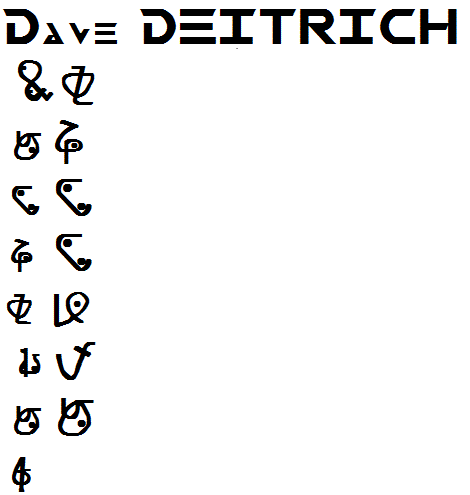 Combat Profile for an average Riviera-Class Marine Resort Ships- 6 defensive attacks per melee.
- 4 aggresive attacks per melee (using pinpoint laser batteries).
- +1 to roll with the punch, strike, and dodge.
- One additional attack at levels 5 and 10.
|








